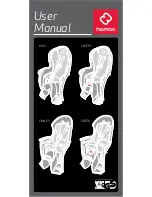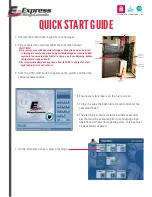
10
TK 55032-18-OP-EN
bulky dressing to protect from infection. Get prompt medical attention.
Wash contaminated clothing before reuse.
•
IIn
nh
ha
alla
attiio
on
n:: Move victim to fresh air and use Cardio Pulmonary
Resuscitation (CPR) or mouth-to-mouth resuscitation to restore
breathing, if necessary. Stay with victim until emergency personnel
arrive.
•
F
Frro
osstt B
Biitte
e:: In the event of frost bite , the objectives of First Aid are to
protect the frozen area from further injury, warm the affected area
rapidly, and to maintain respiration.
R
RE
EF
FR
RIIG
GE
ER
RA
AN
NT
T O
OIIL
L
•
E
Ey
ye
ess:: Immediately flush with large amounts of water for at least 15
minutes. Get prompt medical attention.
•
S
Skkiin
n:: Remove contaminated clothing. Wash thoroughly with soap and
water. Get medical attention if irritation persists.
•
IIn
nh
ha
alla
attiio
on
n:: Move victim to fresh air and use Cardio Pulmonary
Resuscitation (CPR) or mouth-to-mouth resuscitation to restore
breathing, if necessary. Stay with victim until emergency personnel
arrive.
•
IIn
ng
ge
essttiio
on
n:: Do not induce vomiting. Immediately contact local poison
control center or physician.
E
EN
NG
GIIN
NE
E C
CO
OO
OL
LA
AN
NT
T
•
E
Ey
ye
ess:: Immediately flush with large amounts of water for at least 15
minutes. Get prompt medical attention.
•
S
Skkiin
n:: Remove contaminated clothing. Wash thoroughly with soap and
water. Get medical attention if irritation persists.
•
IIn
ng
ge
essttiio
on
n:: Do not induce vomiting. Immediately contact local poison
control center or physician.
B
BA
AT
TT
TE
ER
RY
Y A
AC
CIID
D
•
E
Ey
ye
ess:: Immediately flush with large amounts of water for at least 15
minutes. Get prompt medical attention. Wash skin with soap and water.
E
EL
LE
EC
CT
TR
RIIC
CA
AL
L S
SH
HO
OC
CK
K
Take IMMEDIATE action after a person has received an electrical shock. Get
quick medical assistance, if possible.
The source of the shock must be quickly stopped, by either shutting off the
power or removing the victim. If the power cannot be shut off, the wire
should be cut with an non-conductive tool, such as a wood-handle axe or
thickly insulated cable cutters. Rescuers should wear insulated gloves and











































